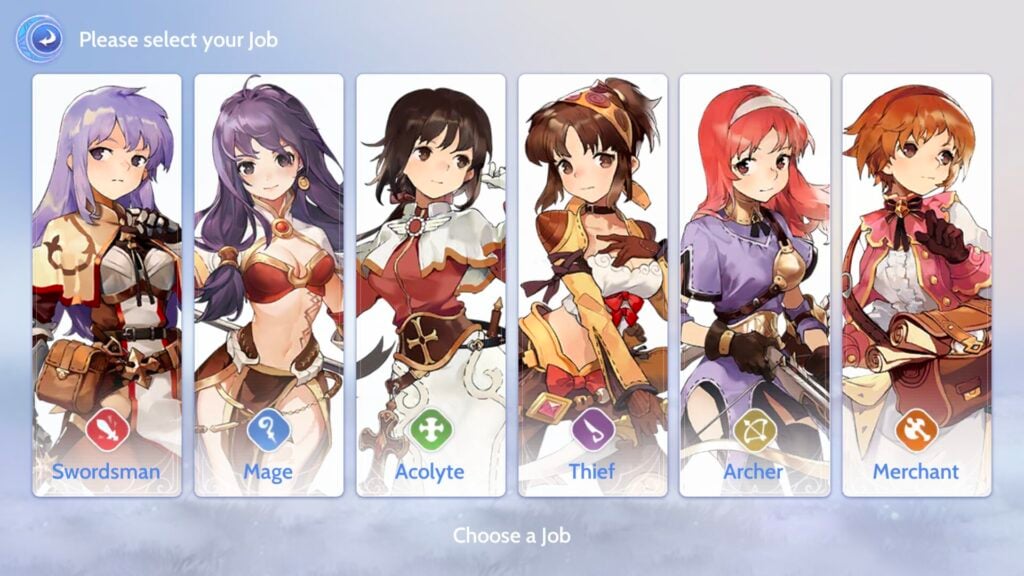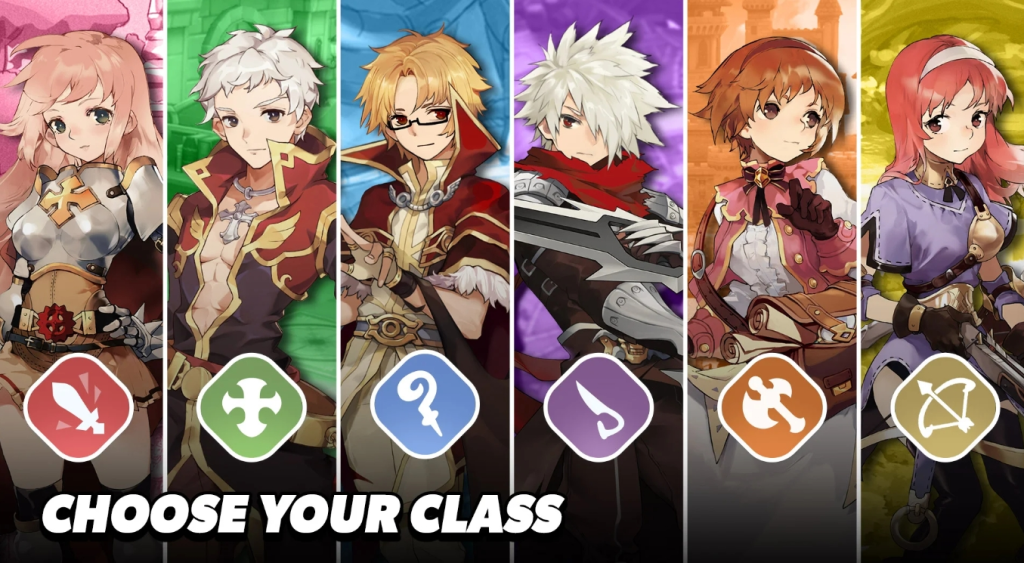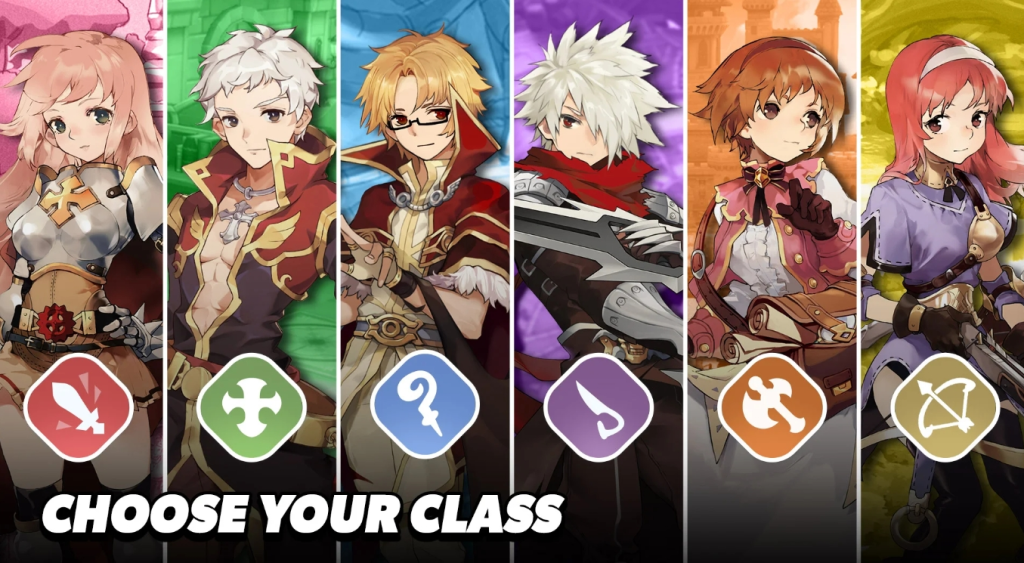Table of Contents [Hide]
- Introduction
- Tier List Explanation
- S Tier
- A Tier
- B Tier
- Frequently Asked Questions (FAQ) about the Ragnarok Origin Tier List
- What is a tier list?
- How are the tiers defined in this list?
- Can a class be good in one aspect of the game but lower in another?
- Why is my favorite class not in the top tier?
- How often is the tier list updated?
- Can I succeed with a lower-tier class?
- Does this tier list apply to both PvP and PvE?
- Where can I discuss this tier list or find more information?
- Conclusion
Introduction
This tier list provides a comprehensive overview of the various classes in Ragnarok Origin, categorized across different aspects of the game: War of Imperium (WoE) Defense and Offense, 3v3 Arena, Grinding, Dungeons, Guild vs. Guild (GvG), and Free-to-Play (F2P) Friendliness. Each category evaluates the classes based on their effectiveness, utility, and overall impact in specific scenarios.
In WoE scenarios, both defensive and offensive roles are considered, highlighting the strategic importance of each class in protecting or assaulting the Imperium. The 3v3 Arena section assesses the prowess of classes in small-scale combat, where individual skills and tactics come to the forefront. Grinding efficiency is evaluated based on the ability of classes to farm resources and level up effectively, crucial for player progression. Dungeons focus on the roles classes play in party-based PvE content, emphasizing teamwork and synergy. GvG performance looks at the impact of classes in large-scale guild conflicts, a critical aspect of the game's social and competitive environment.
Lastly, the F2P Friendliness category provides insight into how accessible and viable each class is for players who prefer not to invest heavily in microtransactions, an essential consideration for many in the gaming community.
This tier list serves as a guide for players to understand the strengths and weaknesses of each class in various game modes, aiding in informed decision-making for both new and experienced players looking to maximize their gameplay experience in Ragnarok Origin.
Tier List Explanation
S-Tier: Classes in the S tier are considered the best in their respective category. They offer unmatched performance, utility, or impact that makes them highly desirable for the specific aspect of the game being evaluated. These classes often have abilities that can significantly influence the outcome of battles, enhance team dynamics, or provide exceptional solo capabilities.
A-Tier: A-tier classes are very effective and efficient but may not have the same level of game-changing impact as S-tier classes. They perform excellently in their roles and are often the preferred choices due to their reliability, strong abilities, and contribution to team success. These classes strike a balance between power and utility, making them solid choices in most scenarios.
B-Tier: Classes in the B tier are considered good and viable but might have certain limitations or conditions that prevent them from being top-tier. They can perform well in the right hands or under specific circumstances but may require more effort, strategy, or specific setups to truly shine. B-tier classes are often well-rounded with a mix of strengths and weaknesses.
War of Imperium (WoE) Defense
| Tier | Class |
|---|---|
| S Tier | • Priest • Wizard |
| A Tier | • Blacksmith • Hunter |
| B Tier | • Assassin • Knight |
War of Imperium (WoE) Offense
| Tier | Class |
|---|---|
| S Tier | • Assassin • Knight • Priest |
| A Tier | • Wizard |
| B Tier | • Blacksmith • Hunter |
3v3 Arena
| Tier | Class |
|---|---|
| S Tier | • Assassin • Knight |
| A Tier | • Hunter • Priest • Wizard |
| B Tier | • Blacksmith |
Grinding/Farming
| Tier | Class |
|---|---|
| S Tier | • Hunter • Wizard |
| A Tier | • Blacksmith • Priest |
| B Tier | • Assassin • Knight |
Dungeons
| Tier | Class |
|---|---|
| S Tier | • Knight • Priest |
| A Tier | • Blacksmith • Hunter • Wizard |
| B Tier | • Assassin |
Guild vs. Guild (GvG)
| Tier | Class |
|---|---|
| S Tier | • Priest • Wizard |
| A Tier | • Assassin • Blacksmith • Knight |
| B Tier | • Hunter |
F2P
| Tier | Class |
|---|---|
| S Tier | • Blacksmith |
| A Tier | • Knight • Priest • Wizard |
| B Tier | • Hunter • Assassin |
S Tier

War of Imperium (WoE) Defense
Priest: Essential for their healing, buffs, and resurrection capabilities, making them a cornerstone of any defense strategy.
Wizard: The backbone of crowd control and area denial, their spells are critical in holding chokepoints and protecting key objectives.
War of Imperium (WoE) Offense
Assassin: Stealth capabilities and high single-target damage make them a threat to key targets, including the Imperium itself.
Knight: Their tankiness and mobility allow them to disrupt enemy lines and survive longer in enemy territory.
Priest: Still invaluable on offense for their support capabilities, keeping the team alive and buffed.
3v3 Arena
Assassin: Their ability to quickly eliminate key targets and their agility make them a top pick for small-scale battles.
Knight: Their sturdiness and crowd control abilities allow them to dictate the flow of the fight, making them extremely valuable.
Grinding/Farming
Hunter: Despite the trap damage nerf, their ability to one-shot certain mobs keeps them highly efficient in farming.
Wizard: Masters of AoE with elemental versatility, allowing for efficient grinding against various monster types.
Dungeons
Knight: Essential for tanking, their ability to absorb damage and protect the party makes them crucial for dungeon runs.
Priest: Indispensable for their healing and buffs, ensuring the party's survival and enhancing their overall capabilities.
Guild vs. Guild (GvG)
Priest: Their support skills are unmatched, providing heals, buffs, and resurrection, which are invaluable in large-scale battles.
Wizard: Their crowd control and high AoE damage can turn the tide of battle, making them a top-tier choice for GvG.
Free-to-Play (F2P) Friendliness
Blacksmith: Their ability to self-sustain and provide their own materials makes them the most accessible class for F2P players.
A Tier

War of Imperium (WoE) Defense
Blacksmith: Their buffs significantly enhance the combat effectiveness of allies, contributing to a stronger defensive line.
Hunter: Excellent at controlling choke points with traps, contributing to the overall defense with their ranged attacks.
War of Imperium (WoE) Offense
Wizard: Powerful AoE spells can break enemy formations, but their effectiveness can be situational based on the enemy's defense setup.
3v3 Arena
Hunter: Still potent with trap and ranged damage, though slightly less dominant than in larger-scale conflicts.
Priest: The only support class, vital for healing and buffs, though slightly less dominant due to the fast pace of arena fights.
Wizard: Their crowd control and burst damage are formidable, but they can be vulnerable if targeted effectively.
Grinding/Farming
Blacksmith: Good AoE capabilities and self-sufficiency in farming materials make them solid grinders.
Priest: Gains significant grinding efficiency with Magnus Exorcismus, able to cover large areas and deal sustained damage.
Dungeons
Blacksmith: Provides valuable buffs and can contribute to crowd control and damage, especially in AoE situations.
Hunter: Long-range damage and the ability to contribute significantly to boss fights make them a strong choice.
Wizard: High damage output and control spells are key for clearing groups of enemies and supporting the party in engagements.
Guild vs. Guild (GvG)
Assassin: Their mobility and ability to target key enemies make them a strategic asset in large-scale conflicts.
Blacksmith: The buffs they provide can significantly enhance the guild's combat effectiveness in GvG scenarios.
Knight: Their role in absorbing and redirecting enemy attacks protects allies and disrupts enemy formations.
Free-to-Play (F2P) Friendliness
Knight: Requires investment in gear but remains a solid choice due to its singular focus on tanking.
Priest: Despite needing two weapon builds, the overall utility and support they bring offer great value for the investment.
Wizard: Can be costly to optimize, but their effectiveness in various game aspects makes them worth the investment for F2P players.
B Tier

War of Imperium (WoE) Defense
Assassin: While agile and good for scouting, their melee focus and lower survivability in group clashes limit their defensive utility.
Knight: Similar to assassins in mobility but slightly more durable; however, they struggle to match the impact of higher-tier classes in defense.
War of Imperium (WoE) Offense
Blacksmith: Buffs are helpful, but their direct combat impact and survivability in offense are less than in defensive roles.
Hunter: Long-range and traps can be useful, but they face challenges in penetrating well-organized defenses.
3v3 Arena
Blacksmith: Limited by the lack of survival skills and the necessity to be in close range to deal significant damage.
Grinding/Farming
Assassin: Faces challenges in farming efficiency due to a focus on single-target damage.
Knight: Similar to assassins, knights tend to grind slower due to their focus on single targets and tankiness over AoE damage.
Dungeons
Assassin: While they can offer high DPS, their role is more niche, depending on the dungeon's requirements and the party's strategy.
Guild vs. Guild (GvG)
Hunter: While still capable of contributing through traps and ranged attacks, their impact is less pronounced in the chaos of GvG.
Free-to-Play (F2P) Friendliness
Assassin: High gear dependency for competitive play makes it challenging for F2P players to maximize their potential.
Hunter: Similar to assassins, the high resource requirement to maximize damage output makes them less ideal for F2P players.
Frequently Asked Questions (FAQ) about the Ragnarok Origin Tier List
What is a tier list?
A tier list is a ranking system that categorizes characters, classes, or other elements in a game based on their effectiveness, utility, or overall impact in specific aspects of the game. It's a helpful guide for players to understand which options might be more advantageous in various scenarios.
How are the tiers defined in this list?
- S Tier: The elite classes with unparalleled abilities that greatly influence gameplay. Ideal for players seeking the best performance in the given context.
- A Tier: Highly effective classes with strong performance and reliability, though slightly lacking the game-changing impact of S-tier classes.
- B Tier: Good and viable options with certain limitations. Effective in the right hands or situations but may require more strategic play or specific setups.
Can a class be good in one aspect of the game but lower in another?
Absolutely. A class might excel in one area, such as PvP, but be less effective in another, like solo grinding. This tier list takes into account various game aspects to provide a well-rounded perspective on each class's strengths and weaknesses.
Why is my favorite class not in the top tier?
Tier lists are subjective and based on general consensus or specific criteria set by the list creator. A class's placement doesn't diminish its value or the enjoyment you can get from playing it. Skill, strategy, and personal preference can often outweigh tier rankings.
How often is the tier list updated?
Tier lists can be updated periodically, especially following game updates, new class releases, or significant changes in the game's meta. It's a good idea to check for the most current version for up-to-date information.
Can I succeed with a lower-tier class?
Yes, you can. While tier lists provide a general guide, individual skill, strategy, team composition, and personal preference play significant roles in success. Many players find satisfaction and success in mastering a class that resonates with them, regardless of its tier ranking.
Does this tier list apply to both PvP and PvE?
This tier list covers various aspects of the game, including PvP (Player vs. Player) and PvE (Player vs. Environment). It's designed to give a broad overview, but specific tier lists for PvP and PvE can provide more targeted insights.
Where can I discuss this tier list or find more information?
Many gaming communities, forums, and social media platforms where Ragnarok Origin players gather can be great places to discuss tier lists, share experiences, and get advice. Look for dedicated game forums, Reddit, Discord servers, and Facebook groups to connect with other players.
Conclusion
We really enjoyed diving into the Ragnarok Origin tier list together! Let's keep in mind, the best part of gaming is in the journey we take, the discoveries we make, and the fun we have along the way. If we ever want to discuss more about it or anything else, we know where to find each other. Here's to many more gaming adventures ahead of us.
